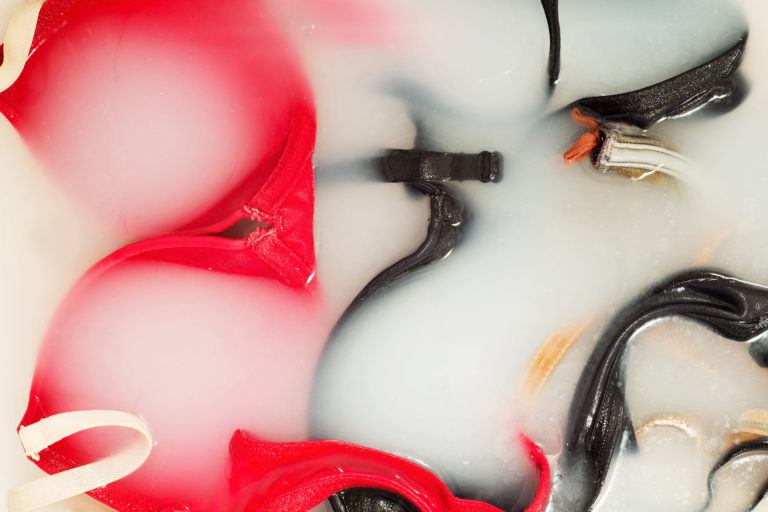
Quick Tips
- Gather your silk cleaning supplies.
- Wash silk.
- Rinse in clean water.
- Rinse again adding ½ cup of distilled white vinegar.
- Dry the silk with a towel.
- Pressing silk.
There is much to love about silk. First of all, it is one of the strongest fabrics on Earth. It was once used for both armor and bullet proofing. This is one of the reasons I wore silk shirts to junior high dances, another reason being silk’s radiant sheen; I felt that I cut a dangerous yet handsome profile. Silk also has a very high absorbency, so even though I was sweating profusely at those dances (while clinging to the wall like a domesticated silk moth) I didn’t look quite so disgusting. Silk will keep you cool in warm weather and, oddly enough, warm in the cold. For this reason (and because of its light weight), you see many travelers using this sensuous fabric. Did I mention silk is beautiful? Is there any other material more strongly associated with luxury and refinement?
Ok, so there is one downside. It is hard to clean silk. Silk garments often come with stern warnings to “dry clean only.” Don’t buy these silk garments. Like any other fabric, silk can be preshrunk before being sewn. It can also go through a process to keep the colors from running all over. Companies that fail to do this practice “planned obsolescence”. They want you to spill coffee on your silk shirt and be forced to buy a new one. You can take items to the dry cleaner, but they use harsh chemicals like perchloroethylene – a known carcinogen and all-around nasty substance. Well, don’t fret. In this article I will demonstrate how to clean silk using methods recommended by many silk vendors.
Steps to Cleaning Silk at Home
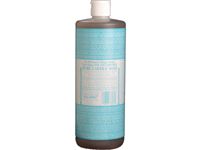 Gather your silk cleaning supplies. The sink is a perfect place to hand wash silk. If you have hard water, you’ll need Borax. For a silk cleaning solution, try Dr. Bronner’s Baby Mild Soap, which is gentle and organic. Your favorite shampoo (no two-in-ones, or moisturizing shampoos) will work too – just like your hair, silk is a protein fiber. If your silk is new (never been washed) and is multicolored, you may want to use a dye grabber (see bottom information). For the rinse you’ll want distilled white vinegar. Lastly, you’ll need a towel for drying your silk and whipping your loved ones.
Gather your silk cleaning supplies. The sink is a perfect place to hand wash silk. If you have hard water, you’ll need Borax. For a silk cleaning solution, try Dr. Bronner’s Baby Mild Soap, which is gentle and organic. Your favorite shampoo (no two-in-ones, or moisturizing shampoos) will work too – just like your hair, silk is a protein fiber. If your silk is new (never been washed) and is multicolored, you may want to use a dye grabber (see bottom information). For the rinse you’ll want distilled white vinegar. Lastly, you’ll need a towel for drying your silk and whipping your loved ones.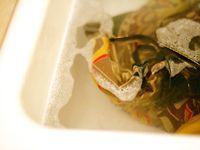 Wash silk. Fill your sink with cool or luke-warm water. If you have hard water, add a pinch of Borax to the wash before the cleaner. Next, add a splash of your cleaning agent, your silk, and then swirl and soak for no more than 3-4 minutes. You don’t need to clean silk angrily; don’t scrub, wring, or get rough while washing. Agitation can damage and shrink wet silk fibers. Just move it around. Like a small child, silk should never be left alone (or long) in the water.
Wash silk. Fill your sink with cool or luke-warm water. If you have hard water, add a pinch of Borax to the wash before the cleaner. Next, add a splash of your cleaning agent, your silk, and then swirl and soak for no more than 3-4 minutes. You don’t need to clean silk angrily; don’t scrub, wring, or get rough while washing. Agitation can damage and shrink wet silk fibers. Just move it around. Like a small child, silk should never be left alone (or long) in the water. Rinse in clean water. A drastic change in water temperature can damage silk. Try to match the temperature of the rinse to that of the wash. If you were using cold water (best for protein stains) then use cold water for the rinse. I rinse until the silk begins to feel like it is free of the soap. It generally takes a few minutes.
Rinse in clean water. A drastic change in water temperature can damage silk. Try to match the temperature of the rinse to that of the wash. If you were using cold water (best for protein stains) then use cold water for the rinse. I rinse until the silk begins to feel like it is free of the soap. It generally takes a few minutes.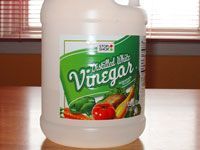 Rinse again adding ½ cup of distilled white vinegar.This will do a few things for your silk item. It will neutralize any soap residue that survived rinsing, prevent alkali damage, and it also revives and brightens silk. Again, swirl the silk rather than agitate. You have now learned how to clean silk, but we’re not quite finished.
Rinse again adding ½ cup of distilled white vinegar.This will do a few things for your silk item. It will neutralize any soap residue that survived rinsing, prevent alkali damage, and it also revives and brightens silk. Again, swirl the silk rather than agitate. You have now learned how to clean silk, but we’re not quite finished.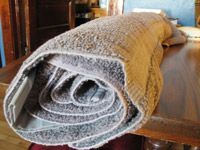 Dry the silk with a towel. Think cinnamon roll. Place the silk item flat on the towel and then slowly roll it up. Give the towel a gentle, affectionate squeeze. This is the best method for drying delicates. The heat and agitation of the dryer will surely damage silk. Some higher-end machines have a “silk” or “fluff” setting that will work, but the towel method is safest. NEVER dry silk items on a clothes line or in direct sunlight. When most of the moisture is gone from your silk, hang it on a rust-proof hanger in a dry, cool place. If that proves awkward, lay it flat on a towel until dry.
Dry the silk with a towel. Think cinnamon roll. Place the silk item flat on the towel and then slowly roll it up. Give the towel a gentle, affectionate squeeze. This is the best method for drying delicates. The heat and agitation of the dryer will surely damage silk. Some higher-end machines have a “silk” or “fluff” setting that will work, but the towel method is safest. NEVER dry silk items on a clothes line or in direct sunlight. When most of the moisture is gone from your silk, hang it on a rust-proof hanger in a dry, cool place. If that proves awkward, lay it flat on a towel until dry.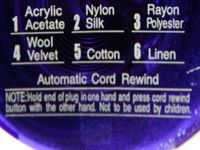 Pressing silk. Make sure your silk is still damp before you begin. If it’s already dried, use a spray bottle to add moisture. Press on the reverse side of the fabric using your iron’s “silk” setting. You can steam iron gently, but too much moisture or spitting will create watermarks for the silk and tantrums for the silk owner. If wrinkles persist, iron using a press cloth on the other side of the silk garment.
Pressing silk. Make sure your silk is still damp before you begin. If it’s already dried, use a spray bottle to add moisture. Press on the reverse side of the fabric using your iron’s “silk” setting. You can steam iron gently, but too much moisture or spitting will create watermarks for the silk and tantrums for the silk owner. If wrinkles persist, iron using a press cloth on the other side of the silk garment.
Cleaning Silk Stains
Speed is paramount in treating stains; if they get a chance to set, you may be doomed. If you choose to take your silk to a professional, see if you can find one that adheres to green principals – one that uses non-toxic solvents rather than “perc” and its noxious kin. There are some general principals to consider when cleaning stains. First of all, extreme heat can set some stains (protein stains), so if you don’t know what it is use cold water. Blot up fresh stains with an absorbent towel rather than rub and bully the mess further into the fiber. Always test whatever cleaning solution you plan to use in an inconspicuous area first. Because silk is so unlike other fabrics, I like to use stain cleaners specifically designed for silk. One such cleaner is WinterSilks Spot Out. It’s effective, biodegradable, and non-toxic. Having a stain chart on hand is also a good idea. You can pretreat silk stains before hand washing. Apply a small amount of your cleaning solution, let it seep in, and then hand wash as above.
Caring for Silk
 Wrinkles. You don’t need to bust out that iron to dispatch those wrinkles. Hang that silk blouse in the bathroom while you take a hot, steamy shower. Invite your friends over – have them hang their silk garments and shower with you. The wrinkles will be gone, but the memories will remain.
Wrinkles. You don’t need to bust out that iron to dispatch those wrinkles. Hang that silk blouse in the bathroom while you take a hot, steamy shower. Invite your friends over – have them hang their silk garments and shower with you. The wrinkles will be gone, but the memories will remain.
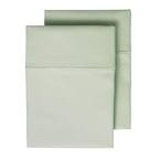 Storage. Labor Day has come and gone and that white silk blouse must be stowed. Well, don’t be tempted to seal it in plastic; you’ll end up with moisture-damaged, mildewed silk. Instead, store silk in a cotton pillow case. Add some cedar chips to keep those greedy (yet fashion- minded) moths at bay.
Storage. Labor Day has come and gone and that white silk blouse must be stowed. Well, don’t be tempted to seal it in plastic; you’ll end up with moisture-damaged, mildewed silk. Instead, store silk in a cotton pillow case. Add some cedar chips to keep those greedy (yet fashion- minded) moths at bay.
 Carbona Color Grabber Reusable Cloth. New silk items can run. The first time you hand wash silk it may bleed because of excess dye or dyes that haven’t gone through the right processes. This product will…grab the dyes, preventing them from dulling or damaging multicolored silks. You can order Corbana Color & Dirt Grabber on Amazon.
Carbona Color Grabber Reusable Cloth. New silk items can run. The first time you hand wash silk it may bleed because of excess dye or dyes that haven’t gone through the right processes. This product will…grab the dyes, preventing them from dulling or damaging multicolored silks. You can order Corbana Color & Dirt Grabber on Amazon.
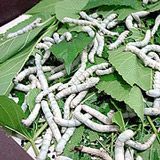 Ahimsa or Peace silk. Peace silk is for those who not only want to know how to clean silk, but keep a clean conscience as well. Peace silk is harvested through peaceful means. Usually, silk moths are boiled alive, screaming and calling out for mercy inside their cocoons. This allows manufacturers to spin unmolested silk onto a wheel as one continuous strand. With peace silk, the moths are allowed to emerge (breaking a few strands of silk) and live out their lives. The silk is processed differently and purportedly possesses therapeutic qualities. Oddly, silk worms prefer peace silk.
Ahimsa or Peace silk. Peace silk is for those who not only want to know how to clean silk, but keep a clean conscience as well. Peace silk is harvested through peaceful means. Usually, silk moths are boiled alive, screaming and calling out for mercy inside their cocoons. This allows manufacturers to spin unmolested silk onto a wheel as one continuous strand. With peace silk, the moths are allowed to emerge (breaking a few strands of silk) and live out their lives. The silk is processed differently and purportedly possesses therapeutic qualities. Oddly, silk worms prefer peace silk.